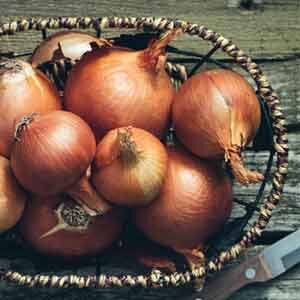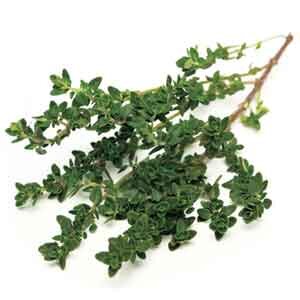Dr. Jim Duke’s Herbal Farmacy and Anti-Aging Tips
The late Dr. Jim Duke was one of the world’s foremost authorities on herbs and the best-selling author of The Green Pharmacy, The Green Pharmacy Herbal Handbook, and The Green Pharmacy Anti-Aging Prescriptions. He died last year after an extraordinary career. For thirty years, Dr. Duke was the leading medical botanist for the USDA and during that time, he compiled the herbal data base for the Agricultural Research Service which contains the latest scientific studies on herbs with information on herbal compounds, as well as folklore and herbal remedies that have existed for thousands of years. (http://www.ars-grin.gov/duke)
In 1998 with the help of friends and volunteers Dr. Duke created his Green Farmacy Garden, planting about 300 species of medicinal herbs in 80 plots, devoted to a disease or an ailment. There’s stinging nettle to relieve arthritis; fenugreek for lowering cholesterol and preventing heart disease; and garlic for fungal infections.
While writing his book on anti-aging prescriptions, Dr. Duke temporarily renamed his garden as a Garden of Youth. Working in the garden helped to keep him young, he feels, and the herbs growing there help to prevent or treat many conditions associated with aging. Dr. Duke contended that herbs can help to slow down the aging process, but he also believes that lifestyle changes are equally important. Dr. Duke has developed some of the following helpful tips for his herbal farmacy:
•Drink two antioxidant herb teas a day which may help to delay the aging process. Good research suggests that oregano, rosemary, bee balm, lemon balm, peppermint, sage, spearmint, savory and thyme contain significant levels of antioxidants.
•Eat a variety of fruits and vegetables as well as herbs, legumes, nuts, and spices.
•Use olive oil and other monounsaturated oils, that are better for you than polyunsaturated oils like corn oil and other vegetable oils. Avoid trans-fats and hydrogenated oils.
•Engage in regular, moderate physical activity. Go for a walk every day.
•Don’t smoke and avoid excessive alcohol consumption.
•Keep stress in check.
•Get adequate rest.
•Take a multivitamin mineral supplement for extra nutritional protection.
•Smell to check freshness of dried herbs every other year. Replenish if herbs are stale. Buy herbs at a store with frequent turnover or order online. See page 000 (pantry section) for web addresses. Many of these herbs are used in recipes throughout the book. Most can be used as an infusion or tea. Herbal amounts vary depending on the strength of the herb. For a general recipe for fresh herbal tea, see the fresh peppermint tea receipt on page 000 (in this glossary under “peppermint” listing).For a dried herbal tea, see the recipe for cardamom tea on page 000 (in this glossary under the “cardamom” listing)
•Make love regularly with someone you love or at least express your affection with friends, pets, even plants. Hug a tree; it won’t tell on you.
He also recommends the following culinary herbs for their health-giving and healing properties:
Basil
Basil is a member of the mint family and native to tropical Asia, where it has been cultivated for over 3,000 years, both for culinary and medicinal purposes. It’s an ancient folk remedy for warts and preventing plaque.
Key Benefits:
•Rich in anti-viral compounds
•Natural insect repellent
•Eases gas
Helps fight plaque formation on teeth
Cardamom
Cardamom, one of the oldest spices in the world, can be dated back to 4th century Greece where it was highly valued for its flavor and medicinal properties. In India, it has been used as a digestive remedy for hundreds of years. Cardamom is one of the best sources of cineole, an antiseptic that eases congestion in the chest and strengthens the central nervous system. To make cardamom tea, lightly smash 1 ½ tablespoons cardamom pods. Put in a teapot, add 3 cups boiling water, cover and let steep for 10 minutes.
Key Benefits:•Antibiotic against infections
•Improves overall cardiovascular health
•Strengthens body’s immune system
•Lowers incidence of cancer in the gastrointestinal system
•Prevents colds and the flu
CAYENNE
Cayenne peppers can be traced back thousands of years to equatorial America, but they are now grown in tropical climates throughout the world. They are the best source of capsaicin, the substance that provides peppers with varying degrees of heat- the more capsaicin, the hotter the pepper. According to Dr. Jim Duke, cayenne and all hot peppers are “therapeutic wonders” and capsaicin ointments alleviate pain for rheumatoid arthritis, psoriasis and shingles. Taken internally as a diluted tincture, capsaicin keeps blood flowing smoothly and strengthens the cardiovascular system.
Key Benefits:
•Stimulates circulation
•Prevents respiratory tract infections
•Eases constipation
•Alleviates rheumatoid and osteoarthritis pain
Celery Seed
Wild celery (and its seeds) has been a common in plant in Europe and parts of Asia since ancient times, whereas cultivated celery first appeared in Europe in the 1600’s. Although both the stalks and seeds are used in the kitchen, the seeds are more prized for their medicinal properties. The volatile oil found in celery seeds contains more than a dozen natural chemicals that can help the cardiovascular system and improve blood circulation. Add 1 teaspoon celery seed to salad dressings such as coleslaw and vinaigrette, and meat marinades for grilling for extra flavor.
Key Benefits:
Improves circulation
Helps maintain blood sugar balance so combats diabetes
Diuretic and antiseptic
Lowers blood pressure and prevents cholesterol
Cinnamon
Cinnamon is one of the world’s most important spices and is the bark of an evergreen green related to the laurel family. It is a close cousin to cassia bark, which is used in Asia. Pungent and warming, cinnamon has been used in the kitchen and medicinally throughout Asia and the Middle East since ancient times.
Key Benefits:
•Fights colds, coughs and fevers
•Relieves gas and indigestion
•Stimulates circulation
*Eases allergies
Clove
Cloves are the dried flower buds of an evergreen tree. They were used in China as early as 266 B.C and have been used in India since ancient times. The spice is usually present in Chinese five-spice powder and garammasala, an Indian spice seasoning. Oil of cloves is strongly antiseptic due to the presence of eugenol, which relieves pain, kills bacteria, and thins blood.
Key Benefits:
•Antiseptic
•Antispasmodic
•Fights infection
*Relieves toothaches
Fennel
Fennel, an anise- flavored vegetable native to the Mediterranean, is one of the oldest cultivated plants. Asians valued fennel as a digestive aid, while the Romans enjoyed fennel shoots as a vegetable. The leaves, stalks and seeds are used for culinary and medicinal purpose. Anethole, the main component of the plant’s essential oil, is most concentrated in the seeds.
Key Benefits:
•Relieves indigestion
•Fights respiratory disease
•Soothes stomach pain
*Helps break up chest congestion
Garlic
Originally from central Asia, garlic is now grown all over the world and has been revered for over 5,000 years for its medicinal properties. Garlic bulbs contain allicin and other volatile oils which are highly antibacterial and antibiotic. According to Dr. Duke, garlic is most beneficial for heart and circulatory conditions.
Key Benefits:
Antibiotic against infections
•Improves overall cardiovascular health
•Strengthens body’s immune system
•Lowers incidence of cancer in the gastrointestinal system
•Prevents colds and the flu
Ginger
Fresh ginger is a knotty, aromatic rhizome traditionally cultivated in China and India, but now grown in many tropical countries throughout the world. It has been used for medicinal purposes as well as flavor for thousands of
years. It is excellent for settling an upset stomach while aiding the digestive process.
Key Benefits:
•Soothes nausea, motion and morning sickness
•Aids circulation
•Antibacterial so prevents colds and the flu
•Lowers cholesterol levels.
Licorice
Licorice is one of the most exhaustively researched herbs and one of the most commonly used herbal remedies. It is often used to flavor sweets and is found in Chinese five- spice powder. According to Dr. Duke, it prevents
inflammation; fights bacteria; and helps to prevent hair loss and enlarged prostates in men.
Key Benefits:
•Anti-inflammatory and antiarthritis.
•Soothes stomach inflammation and ulcers
•Lowers cholesterol
•Prevents cataracts and vision deterioration
Onion
Onion, like garlic, is a member of the allium genus and family. They both contain the phytochemical, allicin. However, onions are gentler on the stomach and more effective in combating diabetes and allergies than garlic. Another component,quercetin, which is found in the onion skin, fights allergies and tames high blood sugar levels. Add onion sins to flavorings to make chicken broth and other soups. Skim away and discard before serving.
Key Benefits:
•Fights allergies
•Protects capillaries
•Diuretic
•Protects against angina
•Combats diabetess
Peppermint
Peppermint is a member of the extensive mint family and contains menthol. Both menthol and peppermint oil are used to flavor all types of pharmaceutical products, including laxatives, antacids, toothpastes, breath fresheners, and mouthwash. The herb is used to season numerous dishes from soups to desserts and praised for its innumerable medicinal properties. To make fresh peppermint tea, put 5 tablespoons fresh peppermint or 3-4 tablespoons dried mint, in a teapot. Pour 3 cups boiling water, cover, and steep 10 minutes. (For an herbal remedy, Dr. Duke recommends letting the tea steep until cool, straining it, and reheating the liquid until hot.)
Key Benefits:
•Tames muscle spasms in intestinal tract
•Relieves gas, flatulence, and bloating
•Externally relaxes tight muscles and relieves pain
•Antibacterial
•Dissolves gallstones
Thyme
Thyme is a small, hardy evergreen shrub, native to the Mediterranean. Its small, aromatic leaves are a staple flavoring in soups, stews and sauces, but have also been used since the seventeenth century for their medicinal properties. Thyme tea is an excellent remedy for sore throats and infected gums, yet it also soothes the digestive system and eases flatulence. Steep 1 teaspoon dried thyme per cup of boiling water for 10 minutes.
Key Benefits:
•Relieves coughing and bronchial spasms
•Applied externally, relieves muscle spasms and rheumatism
•Fights mucous membrane inflammation
Turmeric
Turmeric is native to Southern Asia where is has been used as a flavouring, a dye, and a medicine since ancient times. Curcumin and the curcuminoids in tumeric have powerful anti-inflammatory and antioxidant properties and are responsible for giving tumeric its bright yellow color.
Key Benefits:
•Relieves arthritic inflammation
•Defends against cancer in the colon, gallbladder, and the liver
•Soothes indigestion
•Powerful antioxidant so retards aging and prevents disease















